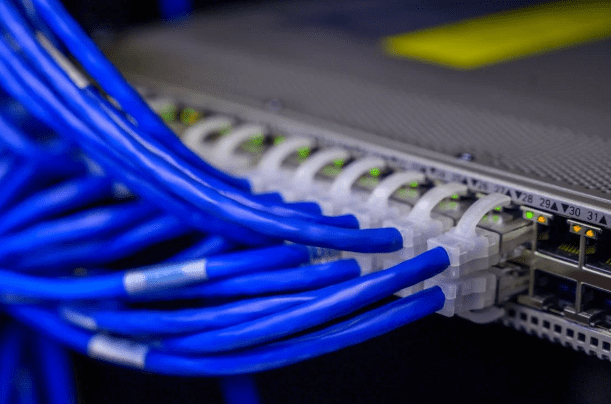Ever worked at a company where the Wi-Fi cuts out during video calls, systems crash during peak hours, and IT “solutions” involve unplugging the router and hoping for the best? In a city like Houston—where the economy moves fast and businesses compete across industries—weak infrastructure isn’t just annoying. It’s expensive. In this blog, we will share how consistent IT systems shape the foundation for scaling operations, from local companies to global ventures.
Strong Systems Start Behind the Scenes
It’s easy to focus on the user interface, the software updates, and the tools teams touch every day. But scaling doesn’t happen through dashboards alone. It starts with the stuff most people never think about: server uptime, network architecture, access controls, data redundancy. These aren’t the glamorous parts of tech strategy, but they are the parts that determine whether growth is smooth or full of friction.
Every expansion—whether it’s opening a new office, onboarding more clients, or building out services—relies on dependable infrastructure. Without that, teams waste time, duplicate work, lose data, or worse, get exposed to security risks. A growing business that can’t rely on its systems ends up scaling problems instead of progress.
Some companies invest heavily upfront to avoid those issues, but not all businesses can carry full in-house IT departments. That’s where support solutions come in. Businesses seeking dependable backend support often lean on Houston managed IT services to maintain continuity without hiring a full internal team. That means 24/7 monitoring, on-call problem-solving, and a steady hand keeping things clean, patched, and backed up. More importantly, it means that internal teams stay focused on building products, serving clients, or expanding reach—without having to worry about technical foundations buckling under pressure.
The goal isn’t just to have fewer tech problems. The goal is to build predictable systems so operations don’t stall every time the company adds new load. With solid IT structure in place, scaling becomes a process, not a gamble.
Scaling Without Stability Creates Waste
Fast-growing companies often fall into a common trap. They chase momentum without building infrastructure that can support it. They hire people, launch products, expand their services—then realize their internal systems can’t keep up. Shared drives get messy. Communication tools don’t sync. Data goes missing. And as the pressure increases, temporary fixes pile up, making things harder to untangle later.
This is the equivalent of building a house with no frame and hoping it holds. It might, for a while. But eventually, things start to lean. Teams lose trust in the tools they use. Customers notice inconsistencies. Technical debt mounts until every new initiative feels harder than the last.
Consistent IT infrastructure doesn’t eliminate all growing pains, but it reduces them enough that they don’t turn into full-blown emergencies. With the right systems in place, adding new employees doesn’t mean reinventing how they’re onboarded. Launching a new service doesn’t involve stitching together makeshift platforms. Instead, it’s plug-and-play. Reusable workflows. Secure environments. Smooth integration.
Modern business moves too fast for patch jobs. If your internal tech feels fragile, every external challenge will hit twice as hard. Consistency isn’t a luxury—it’s leverage.
Tech Should Empower, Not Distract
A strong IT foundation lets your technology quietly do its job without making itself the center of attention. And that’s the point. The goal isn’t to obsess over every server detail or keep up with every new tool hitting the market. It’s to make the technology behind the scenes reliable enough that your people don’t have to think about it.
When infrastructure is inconsistent, it drags focus away from actual work. Instead of shipping updates or solving client problems, your developers are troubleshooting network issues. Instead of marketing your new service, your team’s dealing with broken integrations. Instead of scaling, you’re putting out fires.
And in a remote-first or hybrid environment, this gets worse. Every glitch is amplified when your team is scattered across locations and devices. If your VPN’s spotty, your project management tool lags, and your data isn’t syncing in real-time, collaboration slows to a crawl. Consistent infrastructure becomes the backbone of modern productivity, especially when teams don’t sit in the same building anymore.
It also plays a massive role in employee retention. People don’t leave companies just because of culture or pay. They leave because the tools they rely on don’t help them do their jobs. They get burned out solving problems they didn’t create. A solid backend gives people confidence in the systems around them and clears the way for actual performance.
Security Grows with Structure, Not Assumptions
Growth invites attention—sometimes from the wrong people. And as companies scale, their security needs grow more complex. What used to work when you had ten employees won’t protect you when you have fifty. Or five hundred. Or international clients. The more moving parts, the more entry points. That’s just math.
But strong security isn’t only about firewalls and encryption. It’s about structure. Who has access to what. How updates get rolled out. Where backups are stored and how often they’re tested. Companies that scale too quickly without building that structure end up with inconsistent policies and gaps that bad actors notice before leadership does.
Consistent infrastructure sets guardrails. It gives you a clear view of your environment. It makes updates easier to push and problems easier to isolate. It makes audits faster and compliance less painful. And it limits how much damage a breach can do—because the spread stops at well-defined boundaries, not vague permissions.
Future-Proofing Requires More Than Guesswork
Every industry is in flux. Economic shifts, supply chain hiccups, global crises, platform changes—none of it slows down. Businesses that want to grow without constantly reinventing the wheel need foundations they can rely on when things change. They need tech environments that can bend without breaking.
Future-proofing isn’t about predicting the next five years perfectly. It’s about building systems that make pivoting possible. Standardized processes. Documented workflows. Scalable platforms. These don’t make you immune to change, but they make you agile. You can try something new without breaking what already works.
Companies that outlast trends aren’t necessarily the most innovative. They’re the ones that can shift gears fast—because their infrastructure gives them room to move. Their data’s clean. Their permissions are in order. Their systems don’t collapse under small changes. When everything else is uncertain, they’re not stuck waiting for IT to catch up.
That’s what consistency really offers: not just efficiency, but resilience. It’s the silent partner in every expansion plan, product launch, and hiring cycle. It doesn’t show up in headlines, but it’s behind every win that looks effortless from the outside.
Consistency in IT isn’t about maintaining the status quo. It’s about building systems that give your company the freedom to grow without fear. And in a business landscape that doesn’t wait for anyone to catch up, that freedom is everything.



































